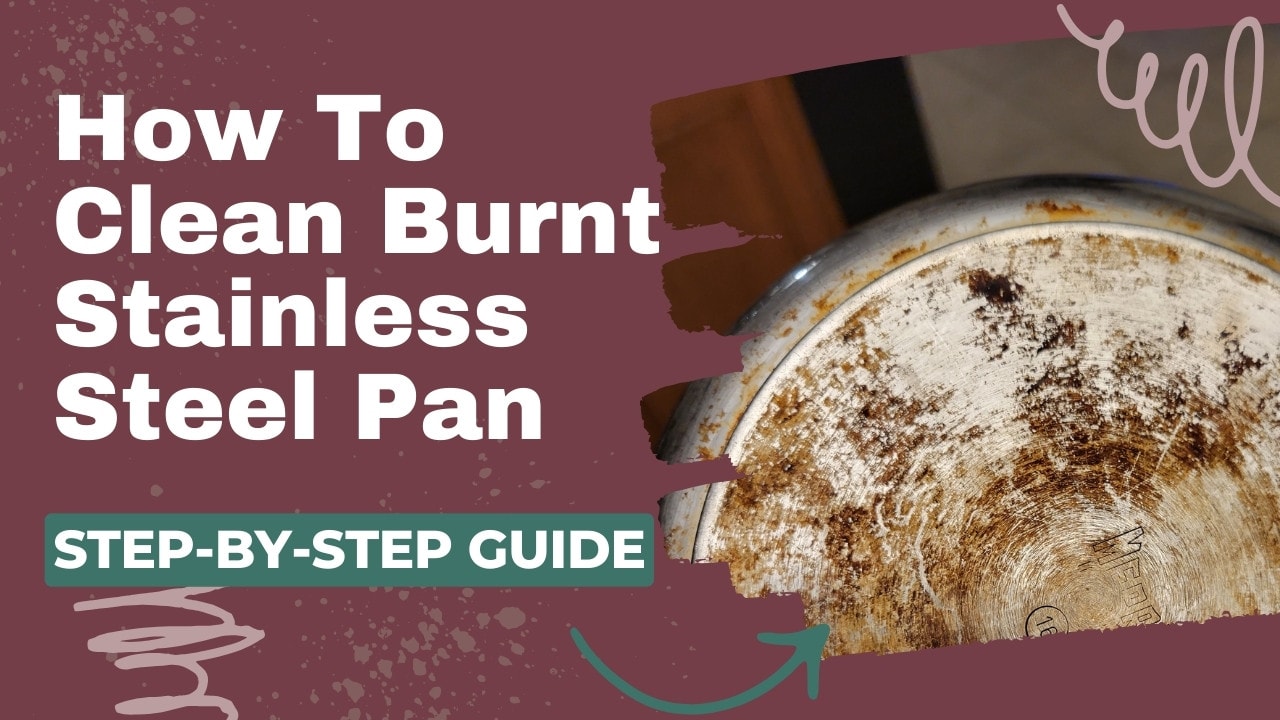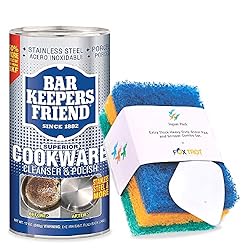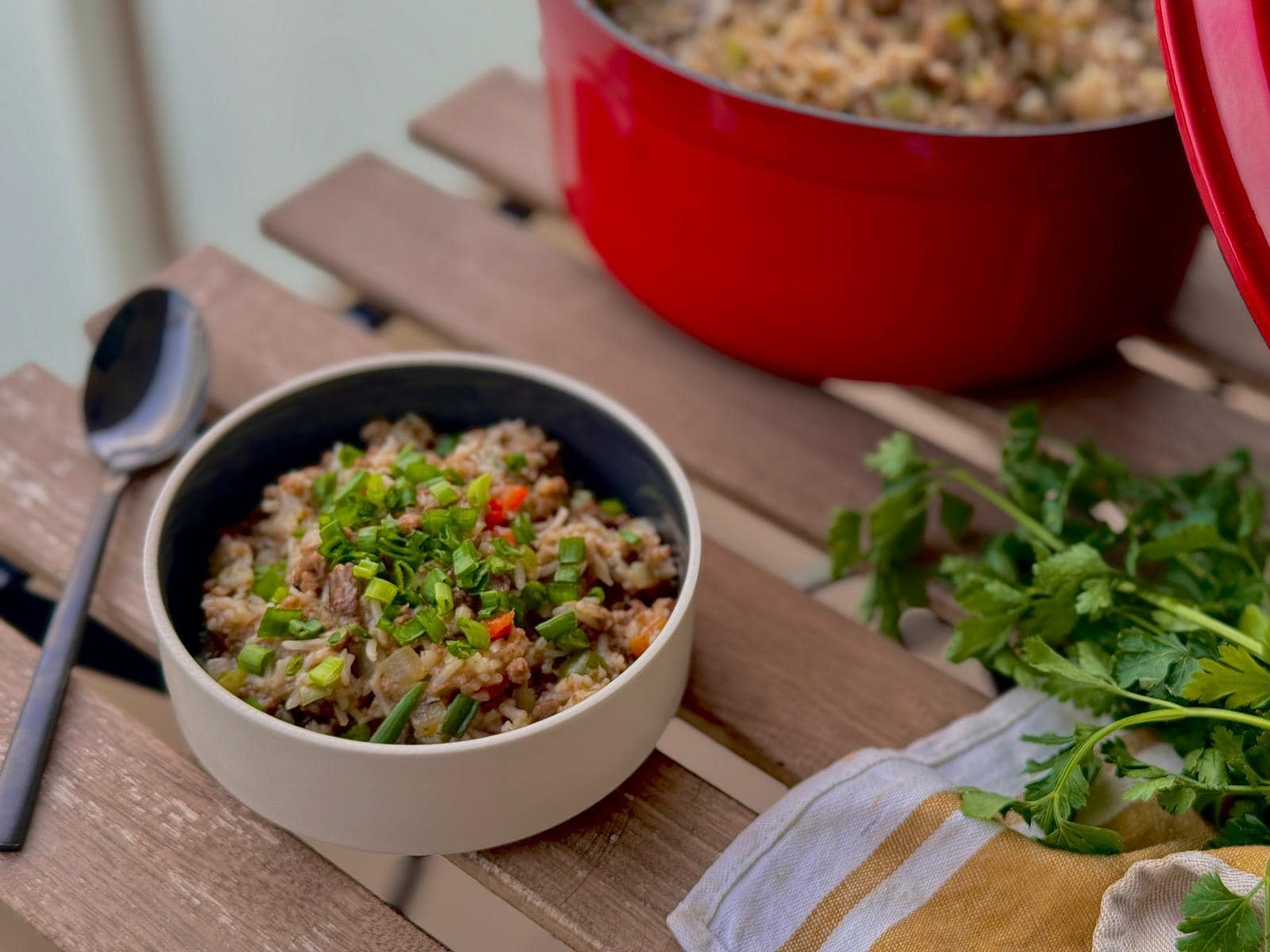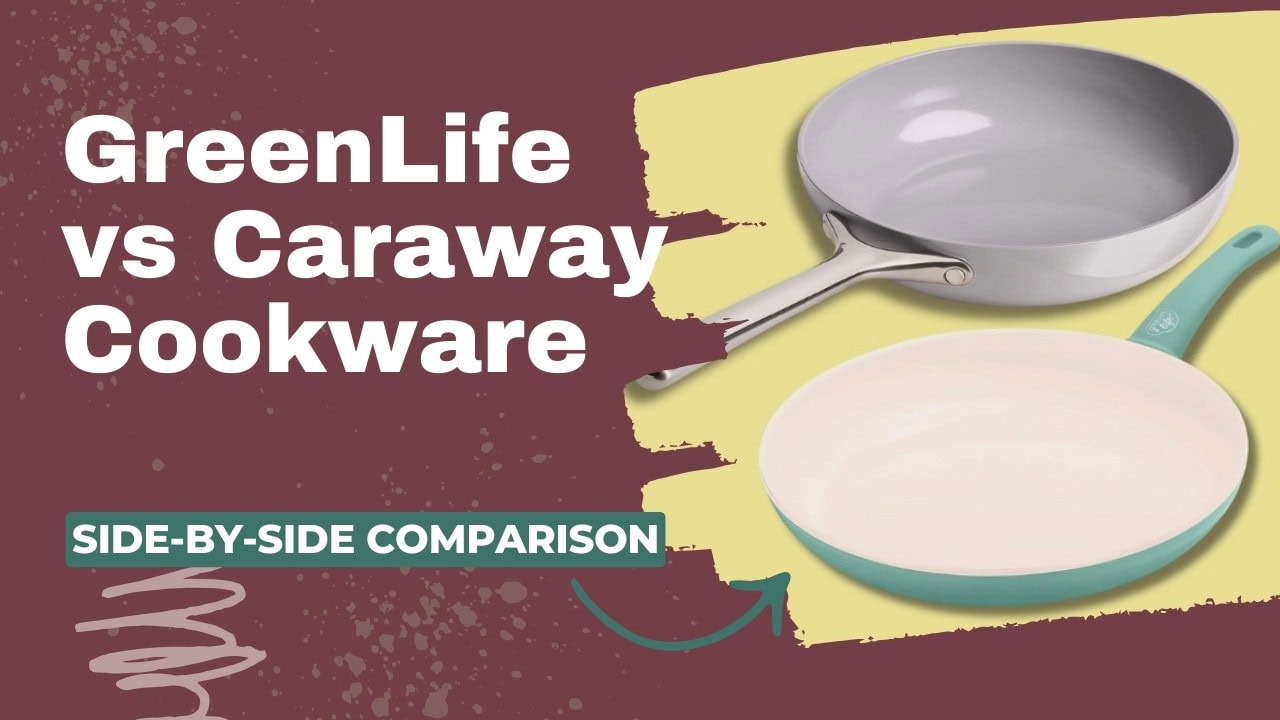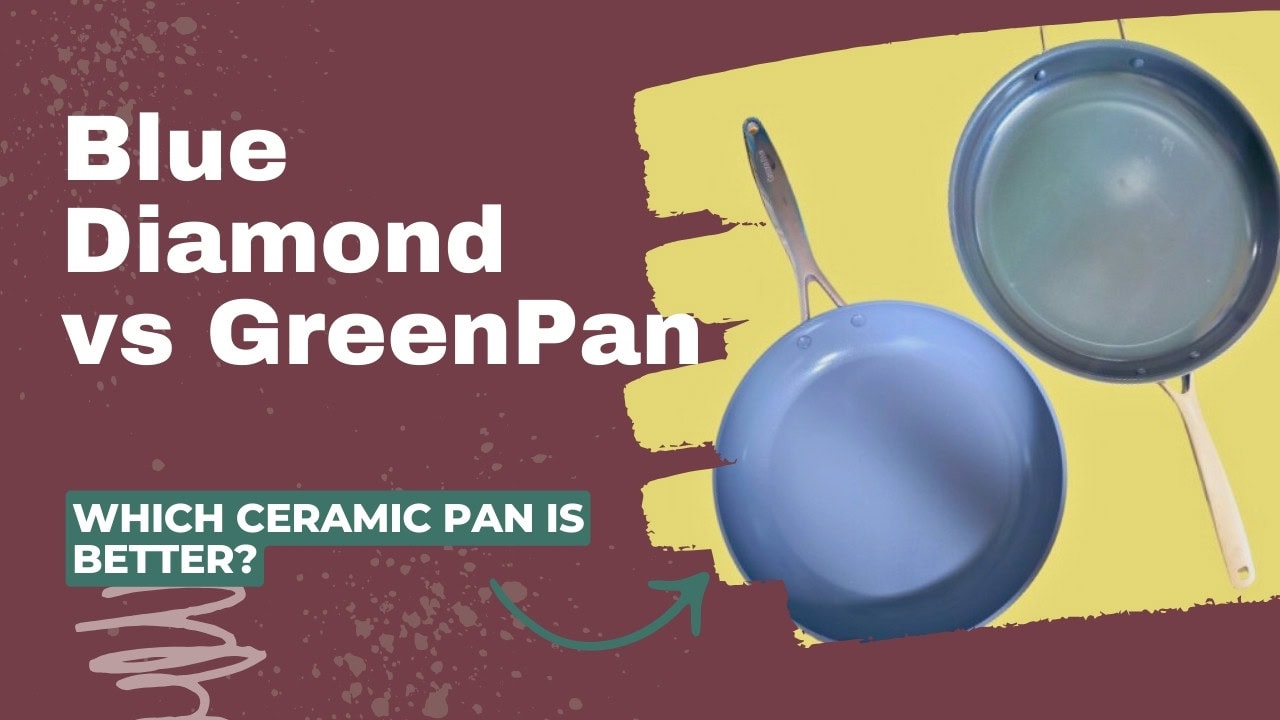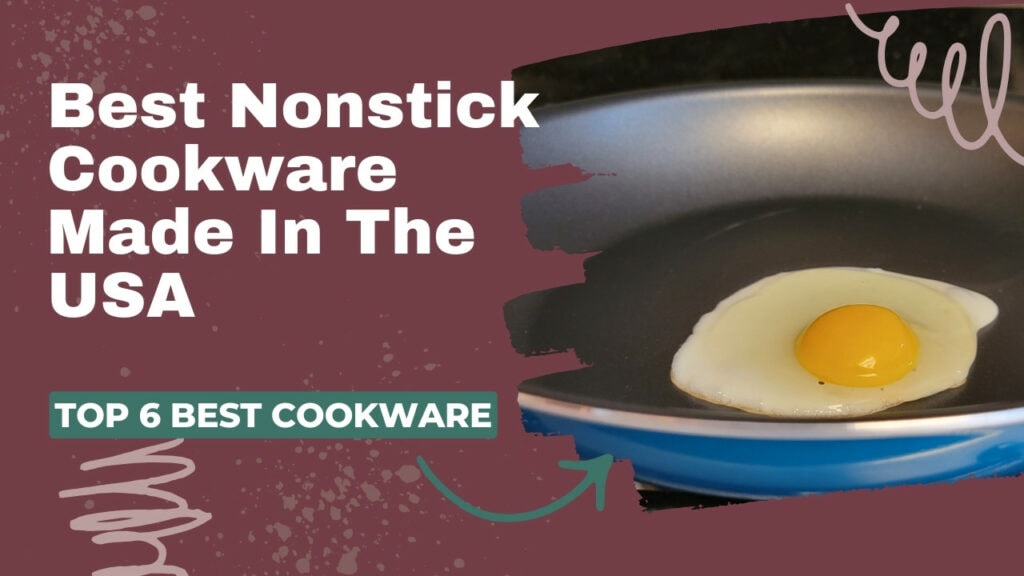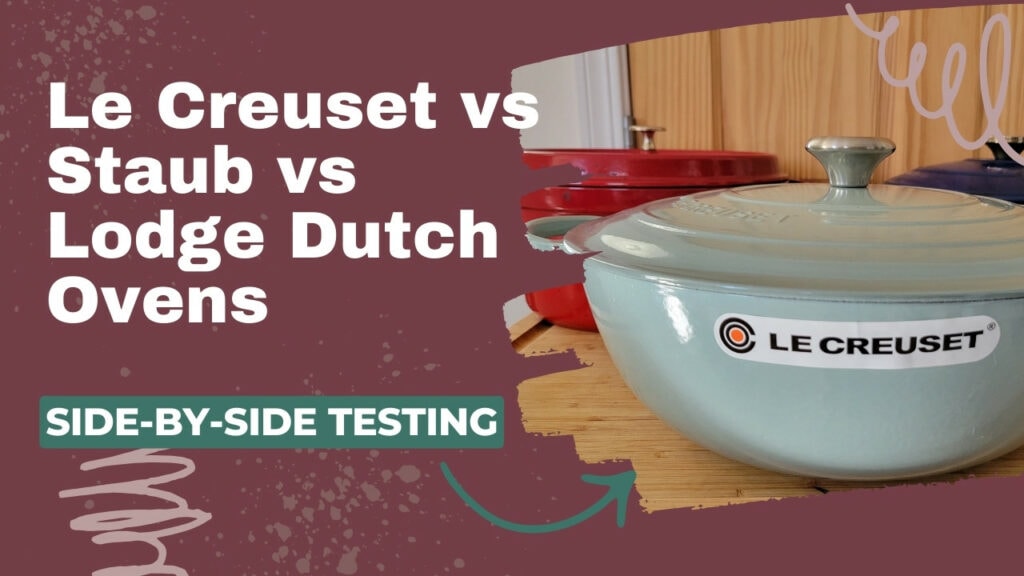I’ve cooked in stainless steel my whole life, and, feeding a family of six, my pots and pans got a lot of use. Making multiple dishes at once means that sometimes my timing is off and things get burnt. But no matter what food is burnt – from sauces to meat, or boiled dairy to desserts – adding a little water and vinegar to clean the burnt stainless steel pan always did the trick, returning my cookware to sparkling silver.
How to Clean Burnt Stainless Steel Cookware
The best way to clean stainless steel cookware is by boiling equal parts vinegar and water and scraping with a wooden spatula. Mixing baking soda with water (or vinegar) can also lift burnt-on residues. For tougher messes and grease stains, commercial cleaners like Bar Keepers Friend will bring your pan back to looking brand new.
I’ll discuss each of these cleaning methods and my favorite cookware cleaning hacks in the sections below.
What you will need to follow this tutorial
- 1 cup of white vinegar
- 1 cup of hot water
- A spatula – wood, silicone, or plastic so as not to scratch the pan
Tip for success: always use watered-down vinegar. Never straight vinegar, or it can corrode your pan.
How to Remove Burnt Food from Stainless Steel Pans Step-by-Step
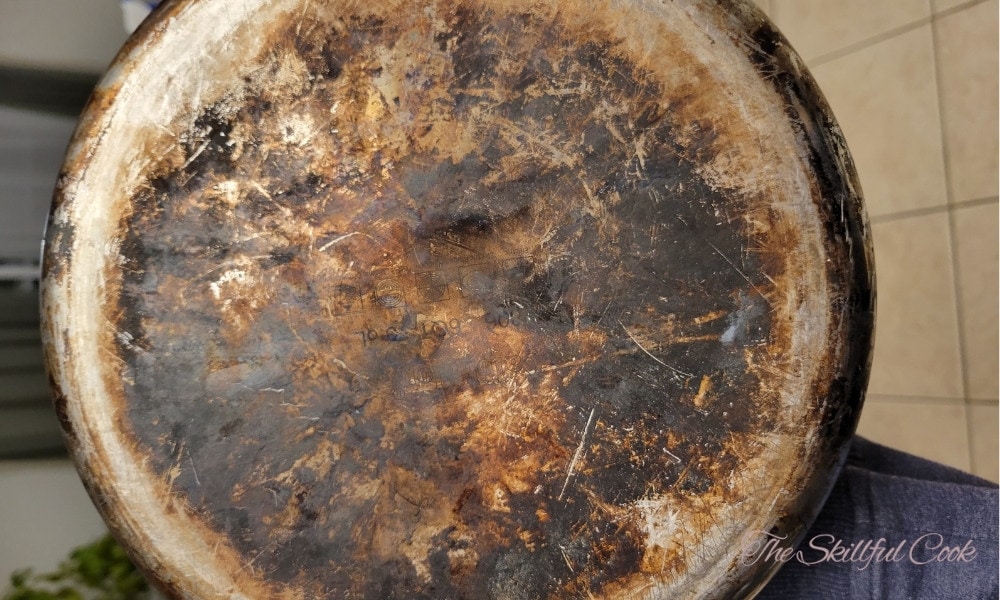
Step 1
Heat your pan over medium heat. It doesn’t matter if it has been sitting messy overnight or you’ve just finished cooking. You don’t need to soak the pan first; this method works well on both soaked and unsoaked pans.
Step 2
As the pan warms, add equal parts hot water and vinegar. Add a cup of hot water and a cup of vinegar for larger pans, or ½ cup of water and ½ cup of vinegar for smaller pans. As long as the vinegar/water solution covers the burnt-on food, you’re good to go.
Tip for success: always use hot water. Never add cold water to a hot pan; it can cause warping.
Step 3
Let the water and vinegar mixture boil until you notice the sides of the burnt-on food start softening. Using a wood, plastic, or silicone spatula/scraper, gently start scraping the bottom of the pan. You’ll feel the residue lift and see the clean bottom. Keep scraping until all the food has dislodged.
Step 4
Empty the pan and wash with hot, soapy water. I always use sponges or cloth, not steel wool or tough scour pads, as they scratch the stainless steel. Softer plastic scour pads are okay to use as they don’t scratch.
Step 5
Dry your pot or pan thoroughly and store it properly by placing a pot protector in between each piece of stainless steel cookware.
The quick video below demonstrates this method.
Alternative Methods
Vinegar’s strong smell can be overpowering, so if you’d like to avoid boiling vinegar in your house, here are some other highly effective alternative methods for cleaning stainless steel that you can use. I’ve tried them all, and my favorite, along with that of most chefs in professional kitchens, is to make a sauce with the “fond” stuck to the bottom of the pan.
Not only does it remove burnt food wonderfully, but it makes beautiful gravy or sauce to go with your meal.
The Pan Sauce Method
Making sauce in the pan is the number one way chefs deglaze stainless steel cookware in restaurants. If you add some stock or broth to the pan, maybe a little cream for a creamy sauce, then simmer and gently stir; most times, stubborn burnt-on foods will lift.
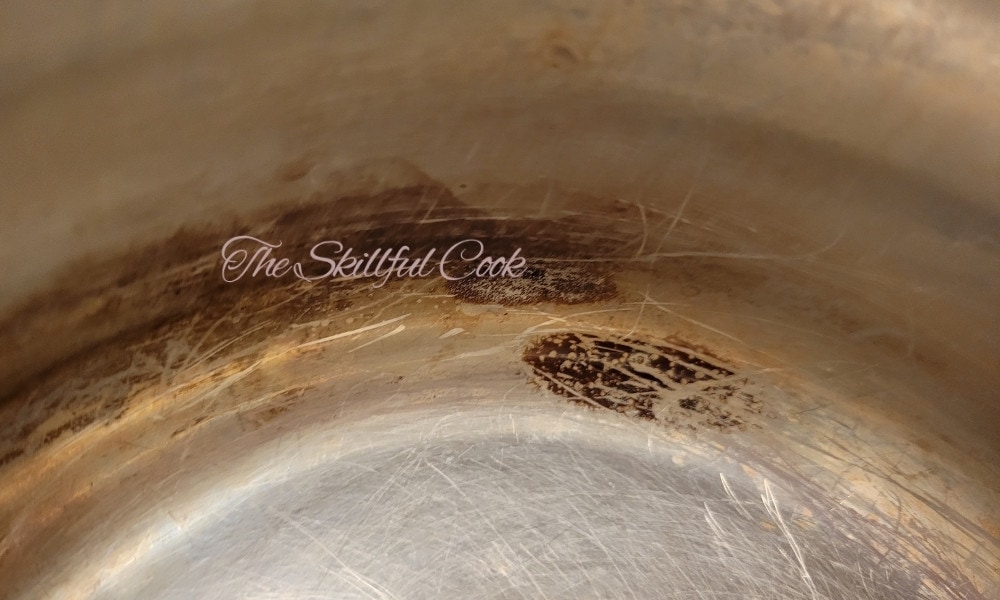
This works with all kinds of sauces –even alcohol-based sauces like a lovely bordelaise or, my father’s favorite – a red wine sauce. I’ve often made it for him while deglazing a stainless steel pan after searing a ribeye, and it takes the crusted protein right off the pan.
Once your sauce is made, just clean your stainless steel pan with warm, soapy water like normal before thoroughly drying and storing it properly.
Tip for Success: keep the heat low and gently stir the stock for a while first before adding your thickening agent. It gives the stuck or burnt-on food a helping hand to lift a little before your sauce thickens.
Baking Soda Method
My next go-to method (if I’ve run out of vinegar) is the baking soda method. I like to add a little lemon as well for that beautiful, citrusy, clean smell. Baking soda with water or baking soda with water and lemon juice are both great ways to get your stainless steel cookware sparkly clean and leave it smelling great.
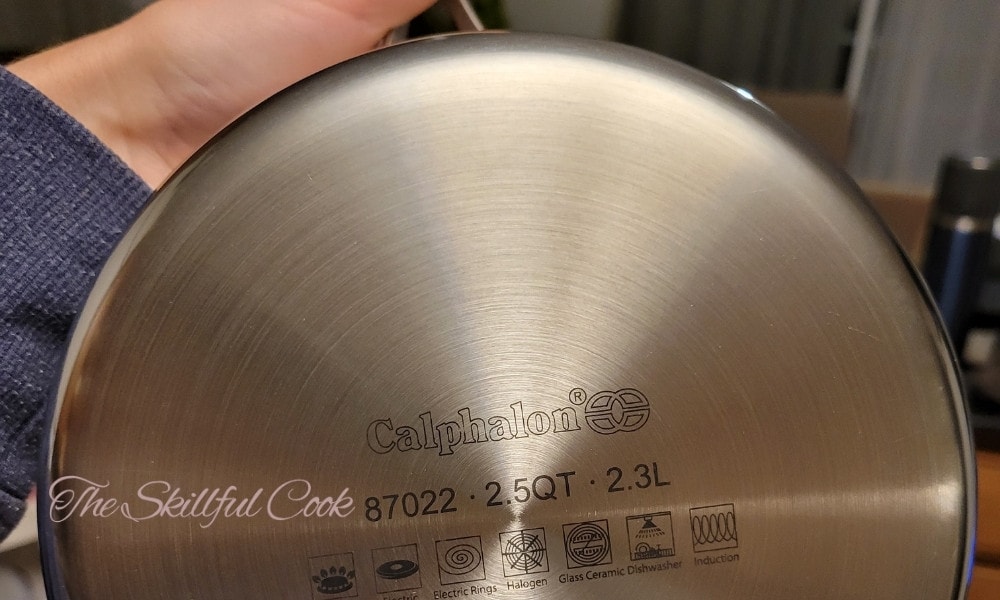
Just heat the pan over medium heat to warm it up first.
Then pour in about a quarter of a cup of baking soda for small pans or a half cup of baking soda for larger pans. Add 1-2 cups of hot water. Always use hot water, as you don’t want to add cold water to a hot pan and risk warping.
You will see the bubbling reaction of the baking soda doing its thing. This is normal, so don’t be concerned. Let it simmer until the water has reduced down, but not all evaporated. As it bubbles away, you’ll see the blackened bits start to lift and come to the top. After it’s been simmering for a while, take a wood, silicone, or plastic scraper and gently scrape the bottom. You’ll feel the stuck-on food lift and float to the surface.
Then, just clean the pan with warm, soapy water like you normally do, dry thoroughly, and store properly.
Tip for success: don’t touch the boiling baking soda mixture at first. Give the baking soda time to work and lift the stubborn, stuck-on food before you start scraping.
Commercial Stainless Steel Cleaners
Bar Keepers Friend is a great commercial cleaner for stainless steel cookware. Once you’ve removed as much of the residue from your pans as you can with soap and warm water, there are often still little stains and discolorations. That’s where commercial cleaners come in.
Add a little water to your clean pan, then sprinkle in some Bar Keepers Friend to make a runny paste. Scrub the pan well using a rough scouring pad, but not steel wool. When scrubbed, rinse under warm water, and your pan should look shiny and brand new.
As with all commercial cleaners, the oxalic acid in this one can irritate your skin. It’s recommended to wear dishwashing gloves when using Bar Keepers Friends. You can take a closer look at the ingredients in Bar Keepers Friend and see their health risk ratings at EWG’s website.
Tip for success: add a few drops of water first, then the Bar Keepers Friend. You don’t need as much as you think, so this way, you can make the perfect cleaning paste.
Homemade Stainless Steel Cleaner
My love of cooking and hosting dinner parties means I always want some stainless steel cleaner on hand. And yes, I’m a bit of an eco-friendly DIY gal to boot – so I prefer to avoid commercial chemical cleaners.
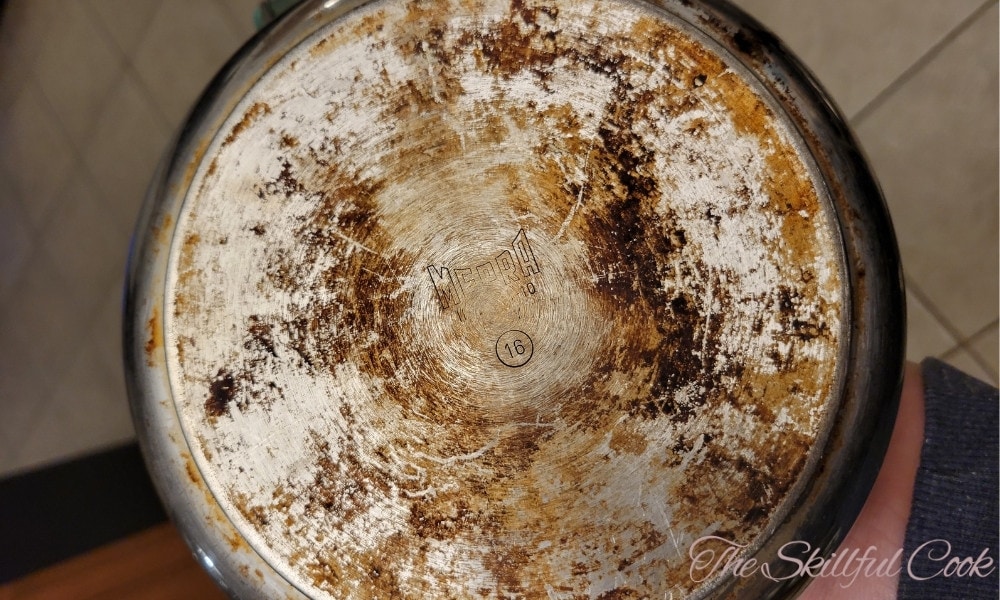
So, I want to share with you guys and gals an old recipe I’ve been using for a few decades now. It works really well and has cleaned even the most burnt stainless steel pan I’ve ever had.
Ingredients:
- Equal parts water and white vinegar (½ cup water, ½ cup vinegar)
- 1 tablespoon olive oil
- The juice of a quarter of a lemon or a few drops of an essential oil of your choice. I like lemongrass or lavender. No: tea tree, eucalyptus, or citrus, as they’re harmful to pets.
Add all of the ingredients to a spray bottle and shake well. This is great for cleaning stainless steel cookware, cooktops, refrigerators, oven faces, and any other stainless steel appliances.
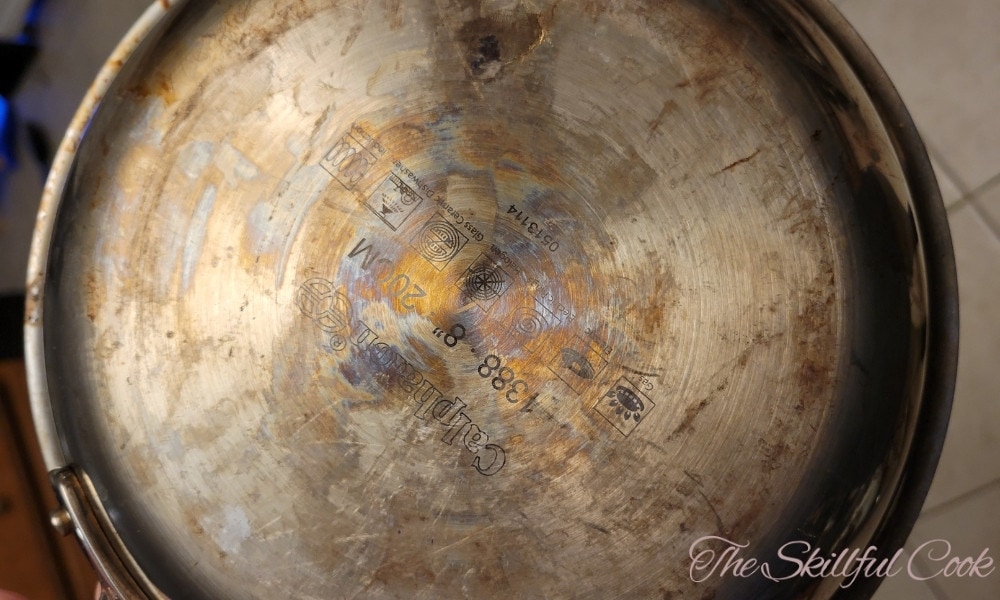
Tip for Success: Once you’ve mixed up a batch of this cleaner, use it fairly quickly, especially if you have used fresh lemon juice.
Why do I recommend making your own?
Making your own stainless steel cleaner is cheap, environmentally friendly, easy, and most importantly, non-toxic. It’s safe for everyone in your household, family, and pets included. No worrying about skin irritations. (It’s splashed in my eye before, and the sting from the vinegar did make me say something unladylike, but it won’t cause a trip to the doctor!) If it spills, this simple and quick formula is safe.
What To Scrub a Burnt Stainless Steel Pan With
What to scrub your stainless steel cookware with is a topic that has been debated many times at the end of a dinner party when the inevitable “Do you need a hand cleaning up?” is raised.
Wood, plastic, silicone, or bamboo scrapers are great. If using scour pads, use the softer nylon ones, not steel wool, because it scratches the bottom of your pan. (Grease can get trapped and burned in scratched stainless steel, making it harder to release food.) These softer scrubbers prevent scratching and increase the longevity of your pots and pans.
Creating a scrubbing paste with baking soda and water and then scrubbing it with scrunched-up aluminum foil seems to work well also. Science ABC explains how the vinegar and aluminum together react with iron oxide to clean stainless steel.
How to Keep Stainless Steel Pans from Burning Next Time
What makes food burn on stainless steel pans? Usually one of these reasons:
So, let’s address these issues one-by-one.
Heat Pan Correctly
Knowing when a stainless steel pan is ready to use is easy. Always heat stainless steel cookware over medium heat before adding anything. This seals the pores, and food is less likely to stick. Stainless steel is porous on a microscopic level. Heating the pan closes these pores to almost seal and makes the pan nonstick once oil has been added.
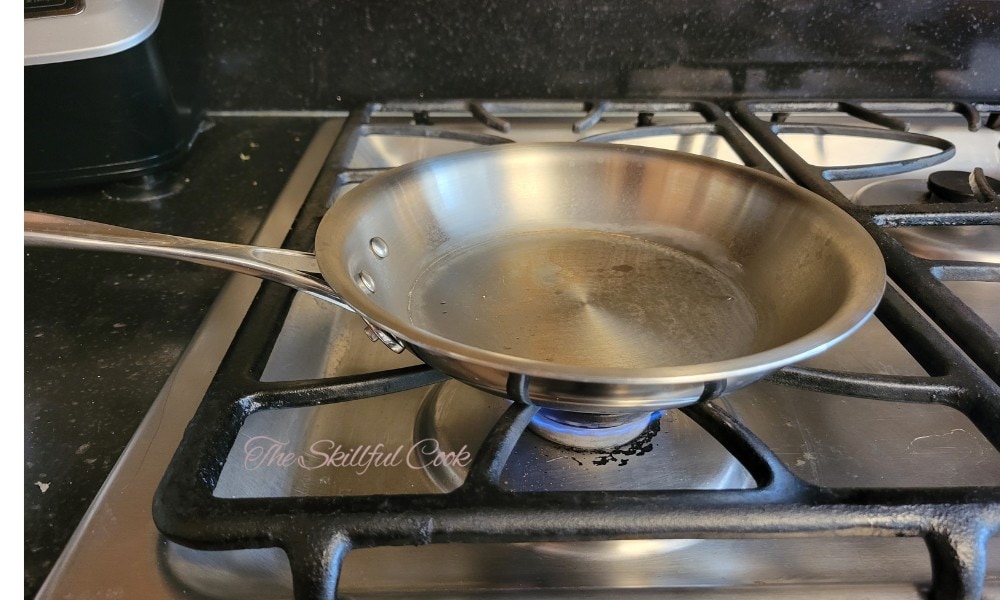
It is also why when you add food to a cold pan, the food can get caught as the pan heats.
Avoid Cooking Sprays
A thin spray of oil may not always give the protein of food the barrier it needs to seal and lift from the pan. Always use some oil or cooking agent of your choice to coat the bottom of the pan so you avoid the dreaded dry fry. Plus, cooking sprays burn quickly leading to carbonized and polymerized oil that is really hard to remove. Of course, if you choose to season your stainless steel cookware, that layer of carbonized oil can actually help keep food from sticking.
Avoid Overheating Oil
Overheating oil is bad for the pan, bad for your food, and can also be dangerous if it splashes! Overheating stainless steel pans reduces their longevity. They have excellent heat retention, so a medium heat is all that is needed to perfectly sauté seafood, sear a sizzling steak, or seal shanks for a perfect melt-in-your-mouth Osso Bucco.
Lastly, NEVER Add Frozen Food to A Hot Pan
When frozen foods are added to a hot pan, they will stick and burn. Food should always be at room temperature. This will not only lead to more even cooking, but will avoid any adverse effects on your stainless steel cookware, like thermal shock or warping due to a sudden drop in temperature.
Conclusion
Equal parts vinegar and water is my go-to method of cleaning stainless steel cookware with burnt-on food. Baking soda and water is a great method if you’re out of vinegar or don’t like the smell. When possible, making a sauce or gravy (if it goes with the meal) is a great way to add flavor and deglaze your pan at the same time.
If none of these work, then a commercial cleaner like Bar Keepers Friend will restore your pan.
Questions and queries are welcome, so let us know if these methods work for you by leaving us a comment below.

